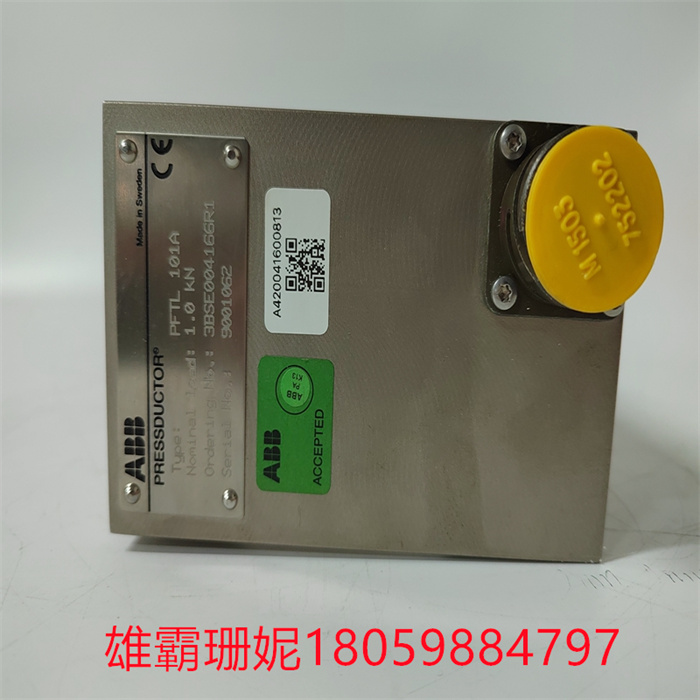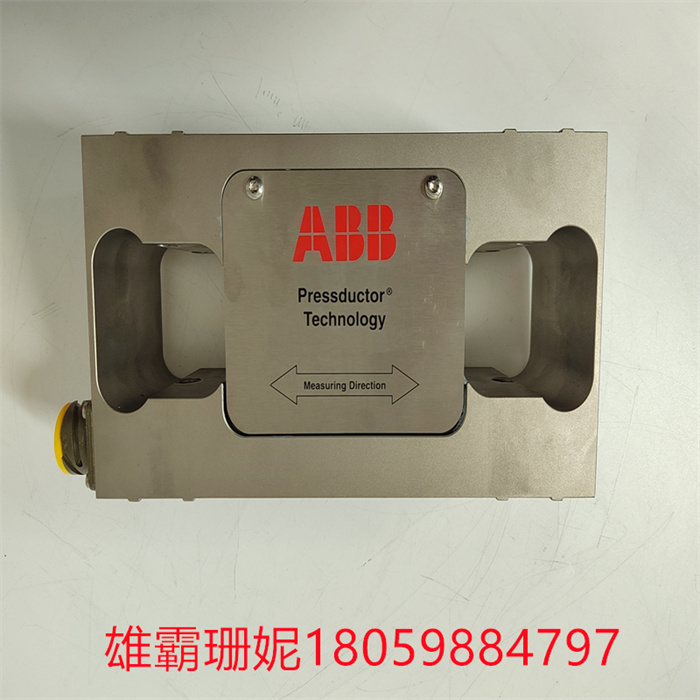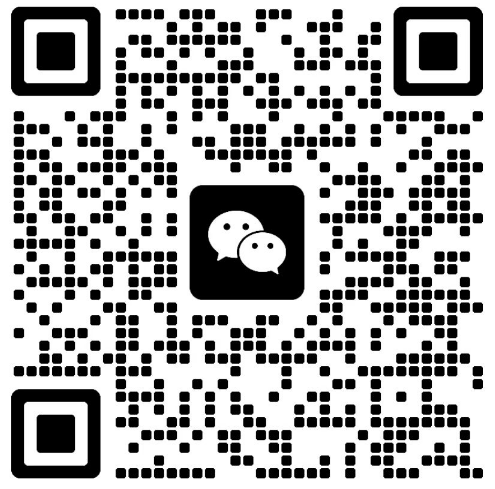ABB PFTL101A 1.0KN 3BSE004166R1 张力控制器
ABB PFTL101A 1.0KN 3BSE004166R1 张力控制器
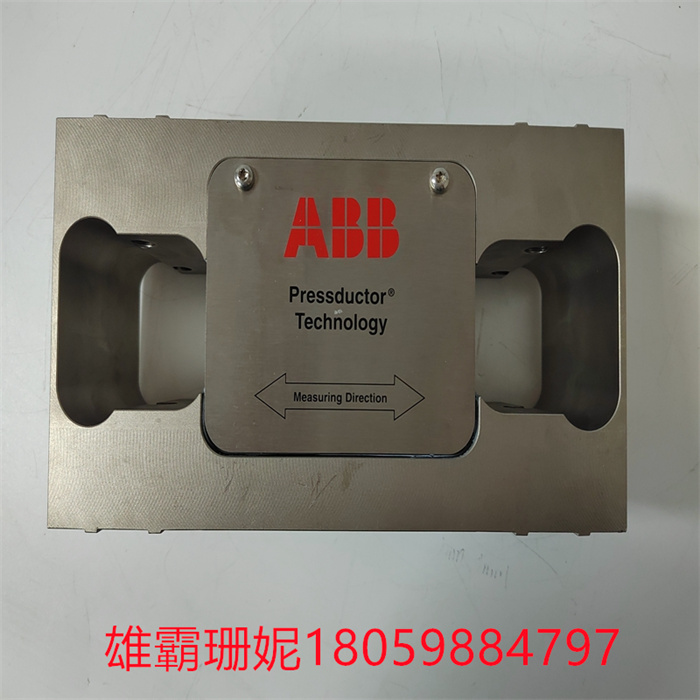
ABB PFTL101A 1.0KN 3BSE004166R1 张力控制器又叫张力检测器,是一种在张力控制过程中,用来检测纱线张力大小的仪器。本质上,张力传感器也是一种称重传感器。
结构及工作原理:
ABB PFTL101A 1.0KN 3BSE004166R1 张力控制器的原理是在称重传感器的基础上,利用两个张力传递部件来传递力,力传感器的内部结构是固定在压电板中心区域的压电板垫片的一侧,压电基片是位于另一侧边缘和力传递部分之间并靠近压电板。张力传感器按其工作原理可以分为应变片型和微位移型,
应变片型张力传感器是张力应变片和压缩应变片按照电桥方式连接在一起,应变片的电阻值会随着外压力的变化而变化,改变值的多少取决于压力的大小。
而微位移型张力传感器是通过外力施加负载,从而使板簧产生位移,然后通过差接变压器检测出张力,由于板策的位移量极小,所以叫微位移张力检测器。
根据不同拉力的强度和尺寸,设计了不同外形的张力传感器,如S型张力传感器,板环张力传感器等。S型张力传感器是最常用的机械传感器,用干测量固体,大部分张力和压力,通常称为拉压力传感器,因为它看起来像一个S形,所以称为S型张力传感器上使用。
而张力传感器多数采用三轮样式的结构,为了不影响缆绳的运行所以在设计上也做到了坚固而紧凑的原理设计,测量重复度好,精度高,安装简便是基干二轮样式的设计特点,而且中心轮的可移动性也便干安装及运行。
应用:
米力传感器已经在当今许多行,得到广沙应里,特别是在工业生产测量领域。张力传感器的优点是安装简单,使里户
更,适用于吊秤,称重机,改装秤和电子测力系统。环形张力传感器板因名称相同而更适合于大范围,恶劣的工作环竞,良好的频率响应,许多用干建材,水泥,化工,起重,起重等。
另外,张力传感器还应用造纸业,制药、化学,食品、钢厂、箔生产厂、电缆铺设和锯木厂等机器中,话用需成批处理
立业的高质量液压元件及仪器的使用。
张力传感器在制药领域的典型应用是在工厂的加工过程中对处理相应处方的搅动容器的称量。而在印刷行业,张力传感
据把采集纸张的张力信号传给控制器,而控制器根据信号则去调节放卷及收卷的速度来达到张力的平衡,及节省了成本的浪费又提高了产量。在印刷机中需要印刷套准检测,墨量和水量,纸张故障等各种检测。而它所使用的则是位移型。张力传感器的安装:
张力传感器的安装分为两种,第一种是利用轴承座固定用螺栓孔把轴承座固定在底座上。另一种是利用选装板固定轴承
座的方法,安装时重要注意的是导致张力测量不准的原因,在张力传感设备接信号线,开关量与输出端子坐弱申纯的时
候尽量远离强电线,以免电磁信号对张力检测产生干扰。而在实际的应用中输出灵敏度,温度补偿范围,零点温度影向,额定载荷,极限符合等因素也是影响张力测量不准的原因。使用注意事项:
1.安装张力检测器和轴承座的螺丝不能过长,过长会导致张力检测器的簧片无法正常工作而检测不到张力。
2.利用侧面固定时,固定螺丝不能过长,否则将导致张力检测器内测量机构损坏。
3.张力检测器在任何时候都不能手强烈撞击或害动,否则会导致张力检测器损坏。
ABB PFTL101A 1.0KN 3BSE004166R1 张力控制器
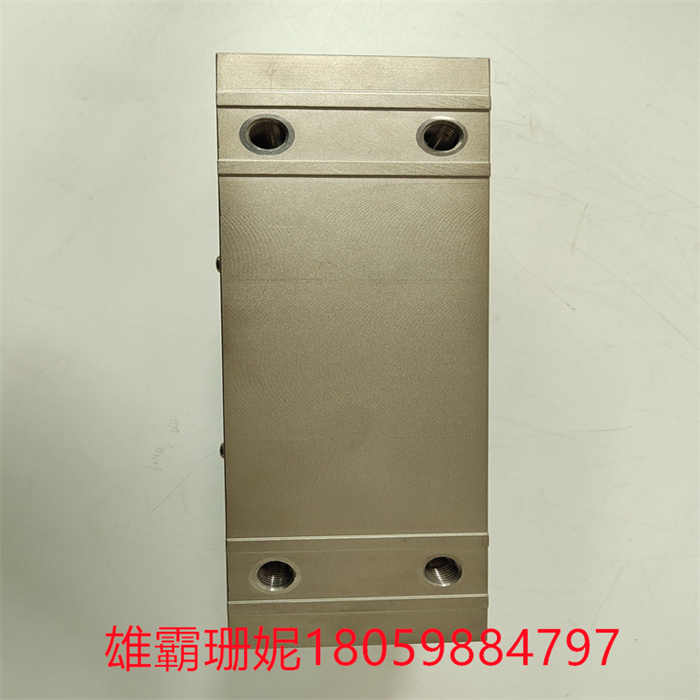
ABB PFTL101A 1.0KN 3BSE004166R1 Tension controller, also known as the tension detector, is a tension control process, used to detect the size of the yarn tension instrument. In essence, the tension sensor is also a load cell.
Structure and working principle:
The principle of ABB PFTL101A 1.0KN 3BSE004166R1 tension controller is based on the load sensor, the use of two tension transfer components to transmit force, the internal structure of the force sensor is fixed in the center area of the piezoelectric plate on one side of the piezoelectric plate gasket, The piezoelectric substrate is located between the other edge and the force transfer part and near the piezoelectric plate. Tension sensor according to its working principle can be divided into strain gauge type and micro-displacement type,
Strain gauge type tension sensor is the tension strain gauge and compression strain gauge in accordance with the bridge connected together, the resistance value of the strain gauge will change with the change of external pressure, the change value depends on the size of the pressure.
The micro-displacement tension sensor is through the external force to apply the load, so that the plate spring displacement, and then through the differential transformer to detect the tension, because the displacement of the plate is very small, so called micro-displacement tension detector.
According to the strength and size of different tension, tension sensors of different shapes are designed, such as S-type tension sensor, plate ring tension sensor, etc. The S-type tension sensor is the most commonly used mechanical sensor that uses dry to measure most of the tension and pressure in a solid, often called a tension pressure sensor because it looks like an S-shape, so it is called an S-type tension sensor used on it.
The tension sensor mostly uses a three-wheel style structure, in order not to affect the operation of the cable, so in the design also achieved a solid and compact principle design, measurement repetition is good, high accuracy, easy installation is the design characteristics of the base two-wheel style, and the mobility of the center wheel will dry installation and operation.
Applications:
Mi force sensors have been found in many lines today and have been widely used, especially in the field of industrial production measurement. The advantage of the tension sensor is that it is simple to install and makes the household
Moreover, it is suitable for hanging scales, weighing machines, modified scales and electronic force measuring systems. Ring tension sensor plate because of the same name and more suitable for a large range, bad working ring competition, good frequency response, many with dry building materials, cement, chemical, lifting, lifting and so on.
In addition, tension sensors are also used in the paper industry, pharmaceutical, chemical, food, steel mills, foil production plants, cable laying and sawmills and other machines, which require batch processing
The use of high quality hydraulic components and instruments.
A typical application of tension sensors in the pharmaceutical field is to weigh stirring containers that handle the corresponding prescription during processing in a factory. And in the printing industry, tension sensing
According to the collection of paper tension signal to the controller, and the controller according to the signal to adjust the unwinding and winding speed to achieve the balance of tension, and save the cost of waste and increase the output. In the printing press, it is necessary to detect the printing register, the amount of ink and water, the paper failure and other tests. And it uses the displacement type. Tension sensor installation:
The installation of the tension sensor is divided into two types, the first is to use the bearing seat fixed with a bolt hole to fix the bearing seat on the base. The other is to use the optional plate fixed bearing
When installing the method, it is important to pay attention to the causes of inaccurate tension measurement, when the tension sensing device is connected to the signal line, the switching quantity and the output terminal are weak and pure
Try to stay away from strong wires, so as not to interfere with electromagnetic signals on tension detection. In practical application, the output sensitivity, temperature compensation range, zero temperature shadow direction, rated load, limit conformity and other factors are also the reasons that affect the inaccurate tension measurement. Precautions for use:
1. The screws for installing the tension detector and bearing seat should not be too long, which will cause the reed of the tension detector to fail to work properly and no tension can be detected.
2. When using side fixing, the fixing screws should not be too long, otherwise it will cause damage to the measuring mechanism in the tension detector.
3. The tension detector should not be strongly impacted or harmed at any time, otherwise it will cause damage to the tension detector.
ABB PFTL101A 1.0KN 3BSE004166R1 张力控制器

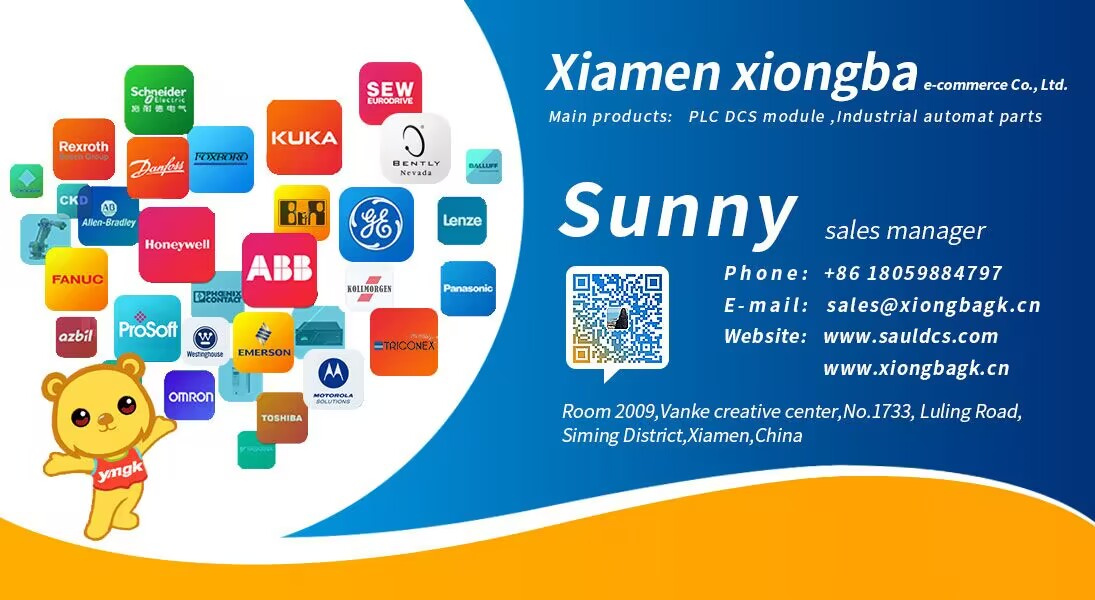
![6@GFX$A[~V[`PFQH]7(V1%T.jpg](https://www.xmxbdzsw.com/uploads/allimg/20230720/1-230H015352Aa.jpg)


